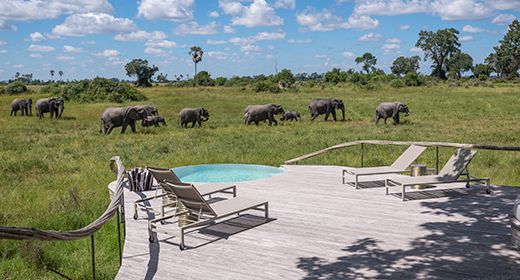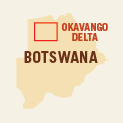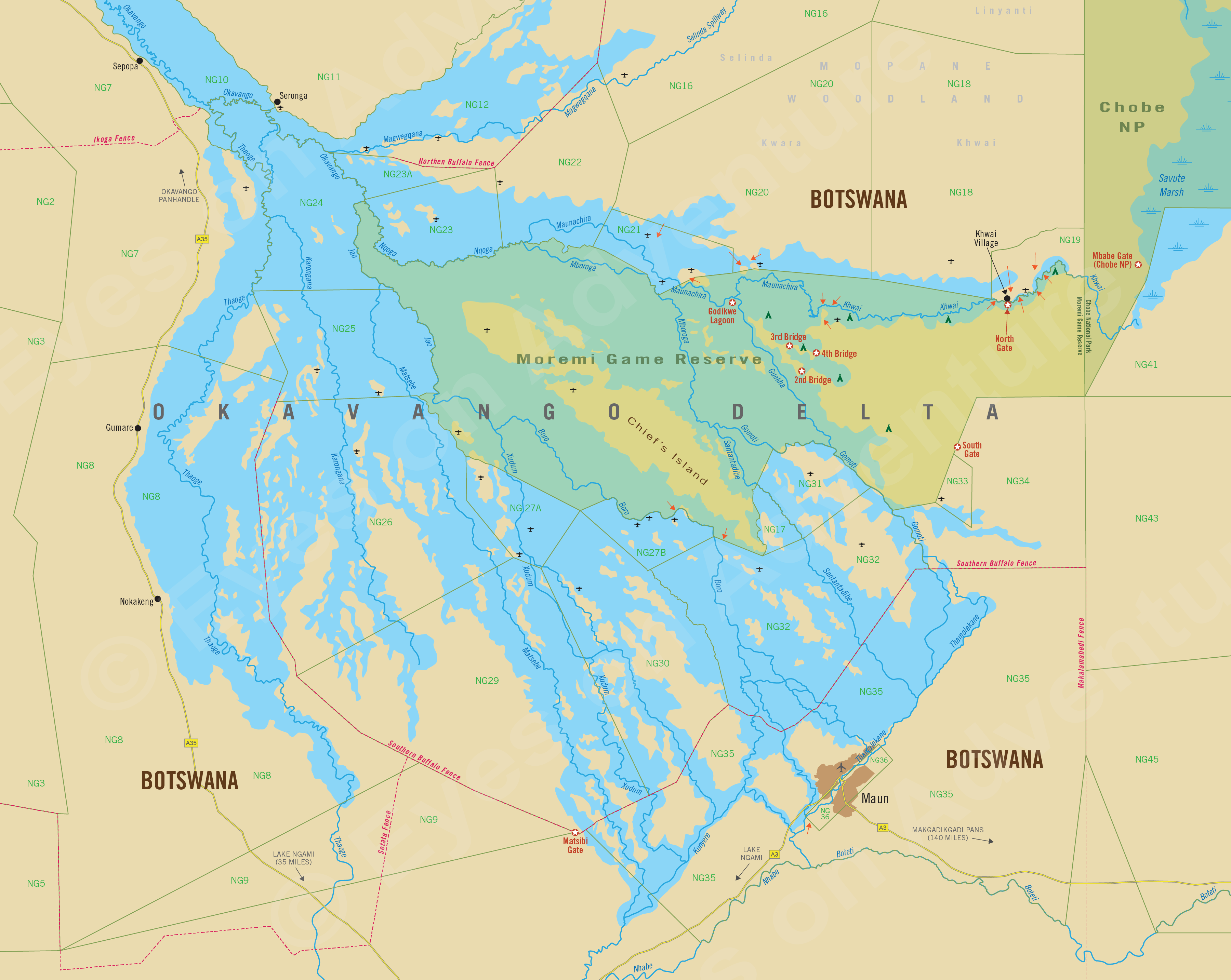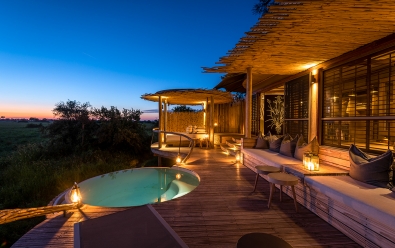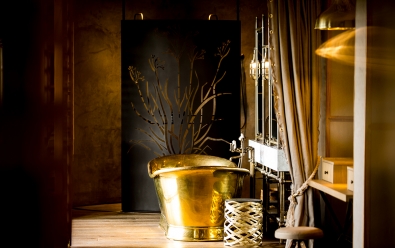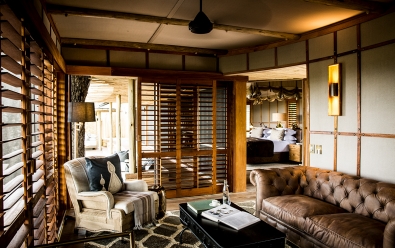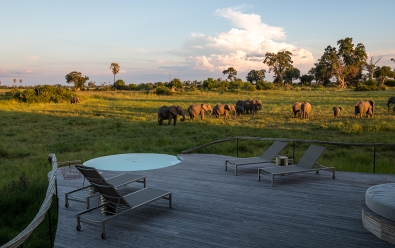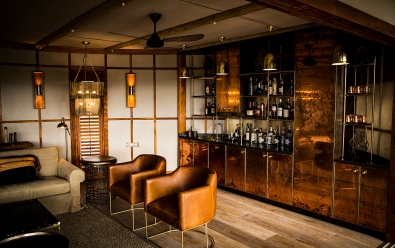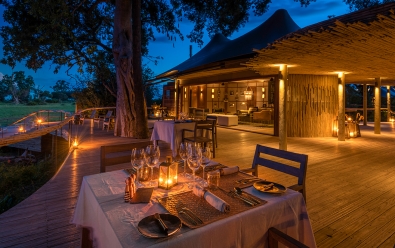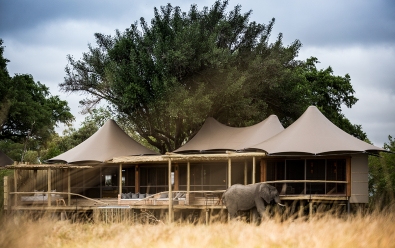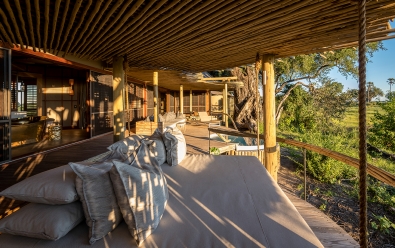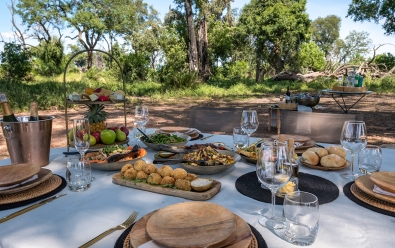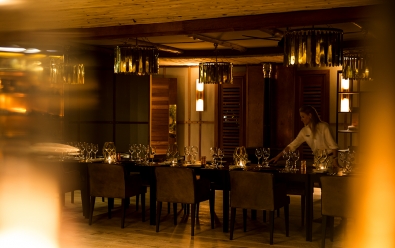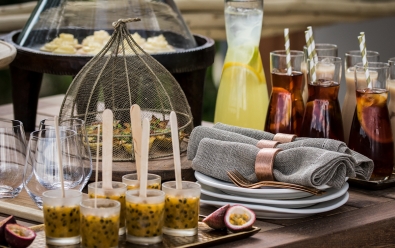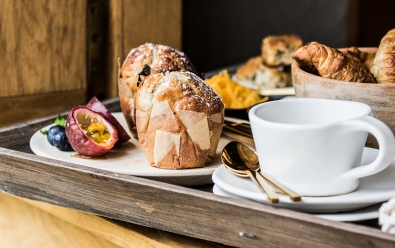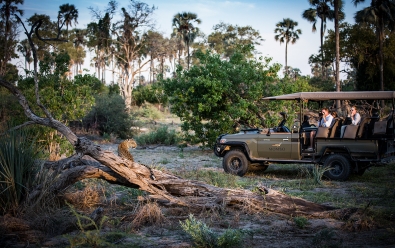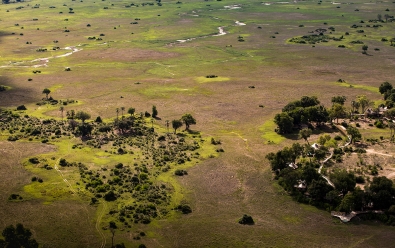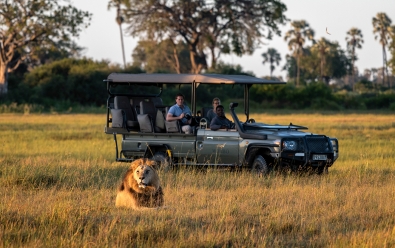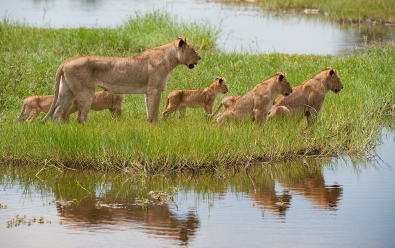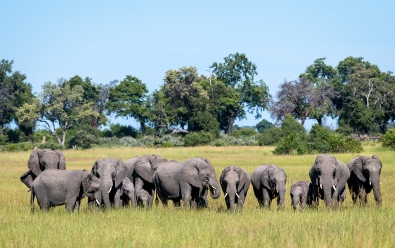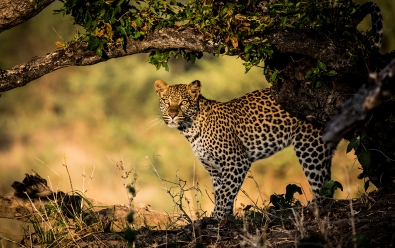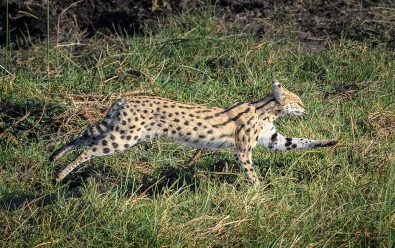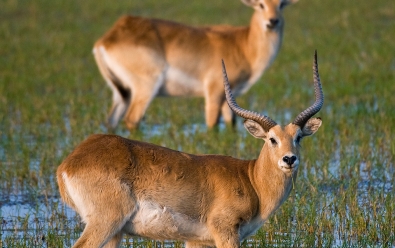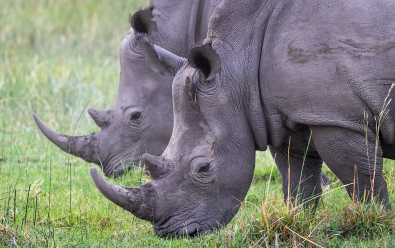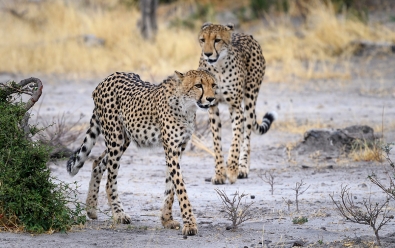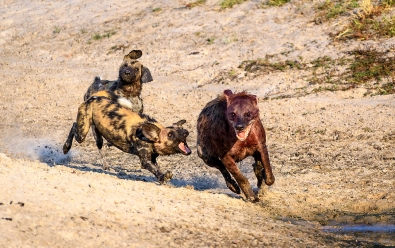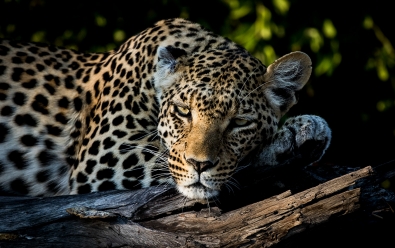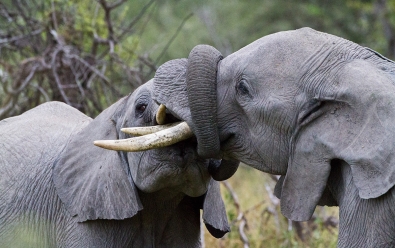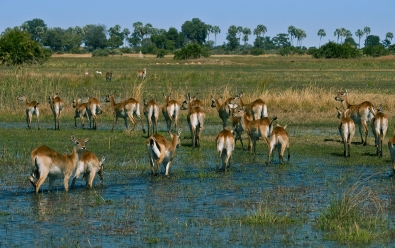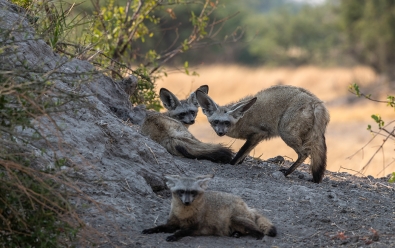Little Mombo Camp
Highlights
- One of the best game viewing destinations in Africa
- Abundance of predators including lion, leopard, hyena, and wild dog
- Spacious and luxurious tented rooms and superb service
- The camp operates on solar power
Location
- Moremi Game Reserve / Chief's Island
- Okavango Delta
- Northern Botswana
Little Mombo is a small and intimate safari camp located in the Moremi Game Reserve, which is the core protected area in Botswana's Okavango Delta, a dynamic and wildlife-rich wilderness.
Little Mombo is the smaller and more intimate sister camp to Mombo Camp, which is Wilderness Safaris' flagship safari camp. The two camps are connected by a raised walkway and together, they are appropriately known as the "Place of Plenty, owing the the area's abundance of wildlife.
Mombo is Wilderness Safaris' flagship safari camp and is appropriately known as the "Place of Plenty, owing the the area's abundance of wildlife. Both camps are situated on a forested island of ilala palms and mangosteen trees overlooking a vast floodplain that attracts large numbers of grazers.
Plains game includes red lechwe, zebra, buffalo, impala, elephant, giraffe, blue wildebeest, greater kudu, and many other species. Predators are also here in very good numbers, especially lion, leopard, and spotted hyena. African wild dog and cheetah are also sometimes seen.
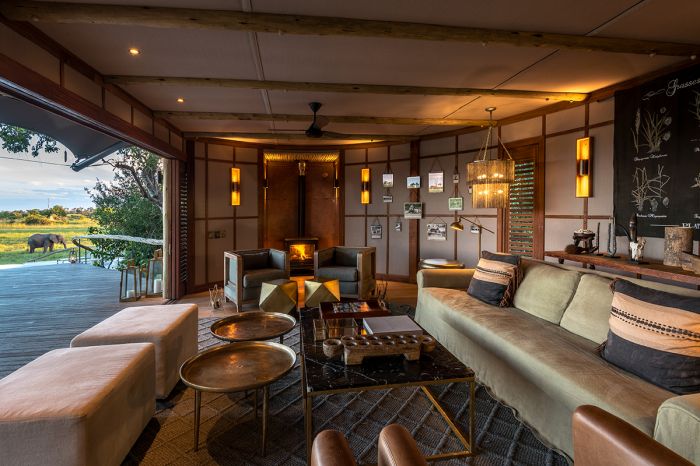
Main lounge and view.
Little Mombo offers four spacious elevated tents connected by raised walkways that lead to the main camp area. Each tent offers a large bedroom, sitting room, and a bathroom with copper tub and both indoor and outdoor showers. Situated to offer views of the floodplain for private game viewing, the tents also feature a private wrap-around outdoor deck with double day-bed, sunken couch, and refreshing plunge pool. The camp is perfect for groups of up to 8 guests seeking a private and exclusive experience.
Wilderness Safaris are one of Africa's leading safari operators and they strive to minimize energy consumption at all their camps. Mombo and Little Mombo are powered by a hybrid system, which combines solar power and a diesel-powered generator. The high-tech system of solar panels and inverters provide electricity to the camp for most of the day and the generator only needs to operate for eight hours per day.
All waste water is treated in an above-ground sewage treatment system to clean the water before it is returned to the environment. A reverse osmosis filtration systems is utilized to produce high-quality drinking water and reduce bottled water usage. Strict eco-friendly environmental standards are maintained so that no harmful chemicals or waste is allowed to enter the rich ecosystem of the Okavango Delta.
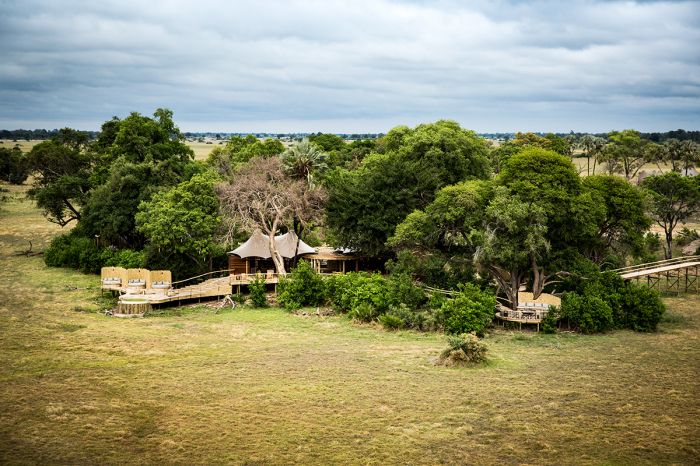
Aerial view of Little Mombo's main area.
About the Okavango Delta
The Okavango Delta is one of Africa's greatest safari destinations and offers an incredible diversity and abundance of wildlife. The Okavango is an UNESCO World Heritage Site as well as a Ramsar Wetland of International Importance.
Often referred to simply as "the Delta", the Okavango is characterized by an ever-changing network of waterways that originate far to the northwest in the highlands of Angola. The Cubango River flows into northern Botswana and spills into the flat expanse of Kalahari sands, where it fans out into a shallow trough formed by tectonic faults beneath the sand.
The annual 'flooding' of the Okavango brings in rich sediments that provide nutrients atop the sands, which in turn creates a diverse ecosystem of permanent and seasonal waterways, deep-water lagoons, papyrus beds, palm-covered islands, seasonally flooded grasslands, and woodlands. The rich fresh-water environment changes year-to-year depending on the level of the floodwaters making it one of the most dynamic wildlife destinations on Earth.
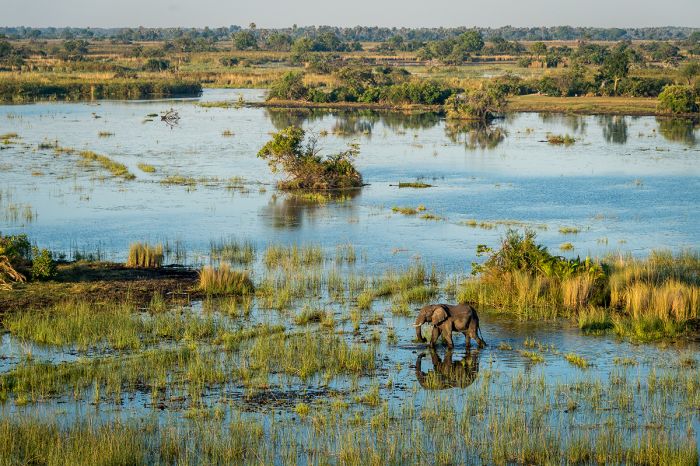
An elephant walks through floodwater in the Okavango Delta.
Wildlife in the Okavango Delta is diverse and includes all of Africa's Big Five animals (lion, leopard, elephant, rhino, and buffalo. Commonly seen herbivores include giraffe, plains (Burchell's) zebra, blue wildebeest, impala, tsessebe, common reedbuck, greater kudu, waterbuck, buffalo, elephant, and warthog. Both species of rhino are found, albeit in small numbers. The Delta is also home to red lechwe and sitatunga, both of which are water-dependent antelopes.
The abundance of herbivores means that predators are common in the Okavango. Commonly seen species include lion, leopard, spotted hyena, black-backed jackal, and African wild dog. Cheetah are sometimes seen in the larger grasslands like those on Chief's Island. Less frequently encountered predators include serval, caracal, honey badger, and various species of mongoose.
The abundance of water in the Okavango provides habitat for Nile crocodiles and hippos, both of which are seen easily at any of the safari camps located near the Delta's permanent water. Primates in the Delta include chacma baboon, vervet monkey, and bush baby (galago).
Birding is outstanding in the Delta, with over 400 species possible. A typical safari day can easily produce over 100 species for an avid birder.
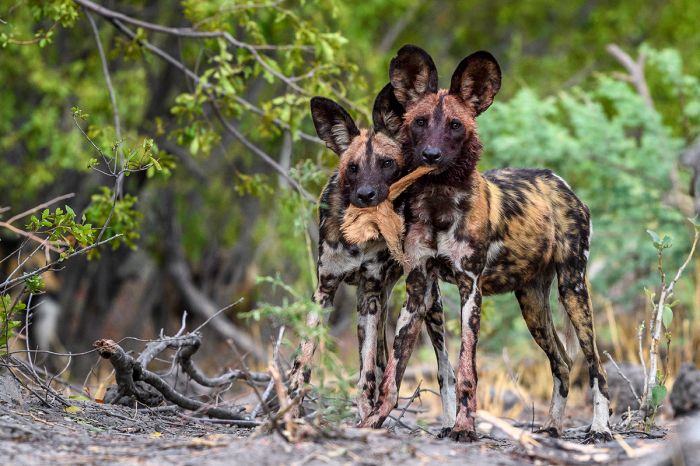
African wild dogs can be seen in the Okavango Delta.
Moremi Game Reserve
Forming the core protected area in the central and eastern portion of the Okavango Delta, the Moremi Game Reserve was created in 1963 and named for Chief Moremi III of the local Batawana people.
Moremi covers roughly one-third of the Okavango and includes some of the Delta's prime wildlife habitats, including Chief's Island, the largest land mass in the Okavango.
ROOMS INCLUDES & EXCLUDES CHILDREN FACILITIES ACTIVITIES
Accommodation
4 guest accommodations in total comprising:
- 4 twin-bedded luxury tents each with two twin beds. Mattress converters are available that transform twin beds into a double beds (to be arranged prior to arrival).
There is also a family tent that is shared with Mombo Camp:
- 1 family unit consisting of two separate but connected tents with two three-quarter beds in each room and each with en-suite facilities. Main bathroom with a double indoor shower, outdoor shower, indoor bath, double-basin vanity, and separate toilet. Second bathroom with a single indoor shower (no outdoor shower), single-basin vanity, and toilet. The bedrooms have a shared indoor lounge area. The tents have separate entrances. There is a shared outdoor deck with sunken seating area, shared outdoor sala and shared private plunge pool.
The canvas tented suites are built on an elevated deck, with elevated wooden walkways connecting the tents to the camp's main area. The suites include a double indoor shower, outdoor shower, indoor bath, double-basin vanity and separate toilet, as well as a well-lit dressing table/vanity area.
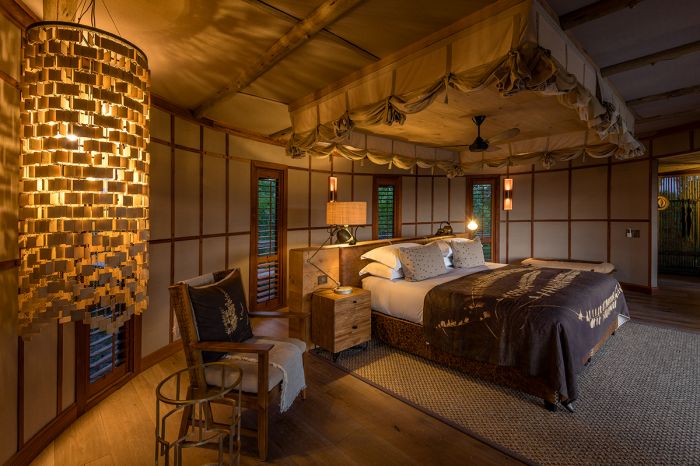
Guest suite bedroom at Little Mombo.
Guest suite amenities include wooden louvre shutter and mosquito-screen sliding doors, and mosquito netting for the beds. Hot water bottles and extra blankets are provided during the chilly winter months. The rooms also include an electronic safe, hairdryer, tea and coffee making facilities, mini-bar, exercise mat and free weights (2 x 1.0 kg and 2 x 2.0 kg).
Other items and features in the guest suites include:
- Desktop telephones for emergency in-camp communication only (for direct calling to the Duty Manager).
- 220V multi-plug adaptor charging facilities for mobile devices. Additional charging facilities (available on request and prior notice essential) for the use of sleep apnea machines (guests to provide own device, spare batteries, charging unit and adaptors).
- Outdoor Sala.
- Private plunge pool.
- Private viewing deck with shaded outdoor lounge area.
- Olympus photographic equipment (includes camera, lenses and a pair of binoculars).
- Complimentary in-tent Wi-Fi.
- Ceiling fans in each tent (pedestal fan available on request).
- Personal amenities, including seasonal bathrobes, slippers, liquid soap, body wash, shampoo and conditioner, body lotion, room spray, insect repellent, insect spray, mosquito coil, shower caps, vanity kit with cotton tip swabs and cotton wool pads, sewing kit, tissue dispenser, laundry bag and umbrellas.
Little Mombo can accommodate a maximum of 8 guests in total: 2 persons in each of the four tented rooms. Note that parties staying at Little Mombo may utilize the family room at Mombo Camp, which can accommodate two adults and two children.
Includes & Excludes
Includes:
- All meals and local beverages including wines, spirits and liqueurs, but excluding premium imported brands and Champagne.
- Twice-daily safari drives in open game-viewing vehicles and other scheduled camp activities (accompanied by experienced guides).
- Laundry services are provided on a daily basis (weather permitting, items will be returned on the same day). Laundry is dried by the sun and on most days any laundry placed out in the morning will be returned by the evening.
- Wi-Fi access.
- Tourism Levy & VAT.
Excludes:
- Purchases from the Mombo Boutique.
- Premium imported beverages and Champagne.
- Spa treatments.
- Scenic helicopter flights ranging in duration from 30, 45 to 60 minutes - with a minimum of 2 guests and a maximum of 5 or 6 depending on the helicopter used (morning or afternoon).
- Tsodilo Hills (UNESCO World Heritage Site) excursion to learn more about Botswana and the history of the San people - with a minimum of 2 guests and a maximum of 10 (via scenic helicopter flights only).
- Any applicable wildlife fee, park fee, reserve fee, concession fee, other land-use fee.
Single Supplement
A single supplement will apply for any room booked by a single traveler; please ask us for pricing.
Children
Children aged 13 years and older:
- Children above the age of 13 are accepted at Little Mombo in a standard twin or the family unit.
- Children between the ages of 13 and 16 years must share with an adult.
- Private vehicles are not required for children aged 13 years and above.
- Regardless of the ages of the children, discounted child rates will not apply to the family unit and standard adult rates will be charged for all four beds.
- The family unit should be booked for parties with young adult children or teenagers due to the design (the entrance, deck and pool are all shared; however, each tent will have their own bathroom (with the second bedroom being smaller).
Children below the age of 13 years:
- Parties with children 12 years and younger, may only book Little Mombo if it is on a sole use basis.
- Regardless of the ages of the children, discounted child rates will not apply and standard adult rates will be charged for on the accommodation at Little Mombo. Sole use basis at Little Mombo would be calculated as 06 x adult rates.
- Even if sole use of Little Mombo is booked for a family with children 12 years and younger, children must still be accompanied by adults in the tents.
Facilities
Main guest area facilities include:
- Pool in main area.
- Lounge, dining and bar areas under canvas on a raised wooden deck.
- Fireplace in the main lounge/dining area.
- Open-air lounge area and deck.
- Gym (equipment includes one stationary exercise bicycle, two treadmills, a rowing machine, exercise mats, Pilates balls, medicine balls, skipping ropes, a range of free weights and kettle bells), fridge in gym with isotonic drinks, e.g. coconut water, air-conditioned gym/spa areas with conveniently located shower rooms off both areas as well).
- Library.
- Traditional boma for dining under the stars.
- Fire deck.
- During winter months, shawl blankets are provided during dinner.
- Spa with two in-house spa therapists, plus in-tent massage treatments are available (treatments at an additional cost). The minimum age 12 years. Treatments for children/teenagers (12 - 16 years) will be lighter in pressure, softer oils used and may be shorter in duration depending on the needs of the child/teenager.
- Shared butler service (Modiredi System which means “to serve” in Setswana) during brunch/lunch and dinners.
- The camp is connected by a raised wooden deck to Mombo Camp with several shared facilities, including the lap pool, gym, spa and Safari Boutique, as well as pizza oven.
Activities
Activities included in the rate:
- Daytime and early evening game drives only (returning an hour after sunset due to Moremi Game Reserve regulations) in 4-seater open 4x4 Land Cruisers. Accommodating four guests per vehicle means they have a more exclusive experience and dedicated time with their passionate guide.
- During winter months hot water bottles (on early morning game drives only), blankets and lined ponchos are provided.
- A pair of Olympus binoculars is available in each of the game drive vehicles for guests to share amongst themselves whilst game viewing and may be requested from our guides.
- Birding.
- Stargazing with a laser pointer.
- Picnic baskets can be prepared for daytime drives allowing for full day excursions.
- Skimmer Hide (seasonal and approximately a 30 minute drive from camp); this is an elevated structure overlooking the floodplain and accommodates a maximum of six guests.
- Kubu Kaya Hide (seasonal and approximately a 20 minute drive from camp); this is an elevated structure overlooking a channel that is dry during low water levels, and accommodates a maximum of six guests.
- Wilderness Safaris and Olympus Photo Hub experience.
Optional activities at additional cost:
- Private activities are on offer (subject to vehicle availability which needs to be booked in advance). There is only one private vehicle available between Mombo Camp and Little Mombo.
- Scenic helicopter flights ranging in duration from 30, 45 to 60 minutes - with a minimum of 2 guests and a maximum of 5 or 6 depending on the helicopter used (morning or afternoon).
- Tsodilo Hills (UNESCO World Heritage Site) excursion to learn more about Botswana and the history of the San people - with a minimum of 2 guests and a maximum of 10 (via scenic helicopter flights only).
Example of a typical day:
- Early morning wake-up call. Morning wake-up and activity times vary according to the seasons, activities on offer, and wildlife sightings.
- Light breakfast before departing on the morning activity.
- Return to camp for a meal and rest period.
- Meet for afternoon tea and snacks (savory and sweet choices) before departing on the activity.
- Return to camp - freshen up or meet for drinks, followed by dinner.
- Enjoy a nightcap or discussion around the fire before retiring.
Great Good Fair Poor
- Jan
- Feb
- Mar
- Apr
- May
- Jun
- Jul
- Aug
- Sep
- Oct
- Nov
- Dec
WHEN TO GO
The Okavango Delta offers very good wildlife viewing opportunities all throughout the year, but there are seasonal variations in terms of weather that may be a consideration when planning your visit.
The high season in terms of tourist demand is during the dry months between June and October. The latter part of the rainy season is the low season.
The winter (June through August) is dry and cool and wildlife may be easier to find as rain water is evaporating and the rivers and deeper waterholes become more frequently visited by the animals.
During the middle and later stages of the rainy season, the grass becomes tall and the bush becomes lush and thick, which makes for lovely colors, but makes spotting wildlife more difficult.
Little Mombo Camp is open year-round.
Summer / Rains
Northern Botswana, including the Okavango Delta receives most of its rain between December thru February, which is the summer season. November and December are wonderful months to visit the Delta, with only occasional rainstorms and most rain coming in short showers, which bring relief to the thirsty land after the dry season.
January and February typically experience afternoon downpours on most days, but all-day rain is very uncommon. By the middle of March, the rains become much less frequent and the grass and bush have grown long and thick. Mornings become cooler by the end of March.
In spite of being summer, the rains keep temperatures from becoming overly hot, although humidity and insect life are at their peak. Days are mostly overcast or partially cloudy, with dramatic skies and a lovely green color to the landscape. Afternoon temperatures average 88°F (31°C), but mornings are very comfortable at around 65°F (19°C).
Baby animals are in abundance, especially impala lambs and warthog piglets. Migratory birds arrive to breed and dramatically increase the number of species and overall numbers, particularly in the lagoons and pans, which are full of rain water and food for the aquatic species.
Unlike the dry months (May through October), when the middays can be very warm, causing wildlife to minimize activity and seek shade from around 10am til mid-afternoon, the overcast skies in the summer often mean that animals are active throughout the day, offering many more hours of game viewing.
Autumn
March, April and May are Fall season months and the beginning of the dry season in the Okavango, with rains very uncommon from around mid-March. The landscape is still lush and green, with sunny days and comfortable temps; afternoons average 84°F (29°C). Mornings are comfortable, but a fleece and base layer may be needed for the first hours on game drive.
Migrant birds fly north and water in the lagoons and rain pans is drying up. Permanent waterways in the Delta are however rising, as the 'flood' water from the Angolan highlands is now reaching the Delta.
Morning temps are around 54°F/12°C and afternoons average 79°F/26°C.
Winter / Dry Season
June through August is winter and the vegetation is drying and going dormant. The Okavango flood water is peaking but the surrounding landscape is mostly brown and yellow. Dust and sand particles in the air is on the rise. Game viewing is superb, with elephant and buffalo herds congregating along permanent water.
Mornings can be chilly to very cold at around 45°F (7°C). Warm clothes, including winter hat and gloves are needed for the open-air game drives. Dress in layers, as the temps do rise quickly during the day, with middays reaching 79°F (26°C).
Spring
September and October are the driest months as the landscape and animals eagerly await the coming rains. Game viewing is phenomenal, with all lagoons and rain pans completely dry and animals congregating around permanent waterways. The flood levels are down and the grass and vegetation mostly dried.
Days are warm, sunny and often cloudless and by mid-morning, most animals are seeking shelter in the shade and awaiting the evening temps to drop. October can be brutally hot and dusty and even smoky as sporadic grass fires can occur.
Safari camps are mostly full to capacity, with guests adhering to guide books saying this is the only tome to visit (not true of course!) Temperatures in October can easily reach 95°F (35°C) or even hotter.




